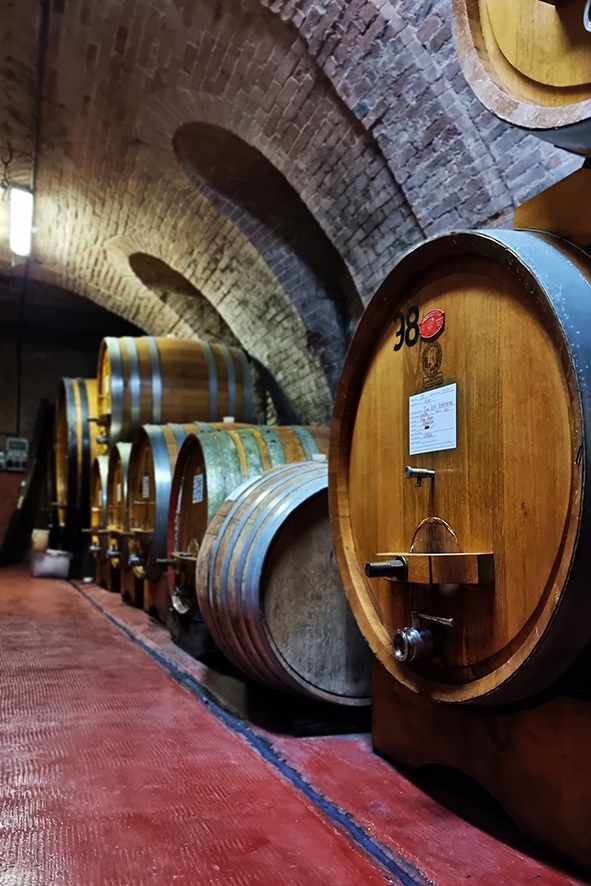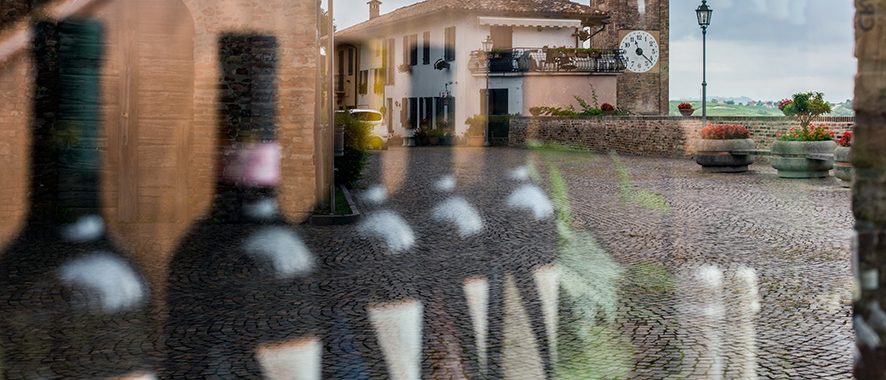Savor the Elegance: Exploring the Enchanting Barolo Wine Region
Indulge your senses in the captivating charm of the Barolo wine region, where elegance meets tradition. Nestled in the heart of Piedmont, Italy, this enchanting destination is a haven for wine enthusiasts and connoisseurs alike. Known for its prestigious Barolo wines, this picturesque region offers a sensory experience like no other. From the rolling vineyards to the historic wineries, every corner of Barolo exudes a timeless beauty that captivates both the eye and the palate. Join us on a journey through this beguiling wine region as we uncover the secrets of its celebrated wines and the stories behind the passionate winemakers. Whether you’re a seasoned wine lover or a curious explorer, Barolo promises to leave an indelible mark on your senses, inviting you to savor the elegance that lies within each bottle. So, raise your glass and let us transport you to the enchanting world of Barolo, where wine becomes an art form and every sip is a celebration.

History and background of the Barolo wine region
The history of the Barolo wine region is as rich as the wines it produces. Dating back to the 19th century, Barolo has a long-standing reputation for excellence. The region owes its name to the village of Barolo, where the wine was first made. It was here that the visionary winemaker, Camillo Benso, Count of Cavour, recognized the potential of the Nebbiolo grape and set out to create a wine that would reflect the unique terroir of the region. Today, Barolo is recognized as one of Italy’s most prestigious wine regions, with its wines often referred to as the “King of wines and the wine of Kings.” The region’s history is deeply intertwined with its winemaking traditions, and a visit to Barolo is like stepping back in time to a bygone era of wine production.
The Barolo wine region is characterized by its hilly landscape, which provides the perfect conditions for grape cultivation. The vineyards are planted on slopes, allowing for optimal sun exposure and drainage. The region’s unique microclimate, with its warm summers and cool autumns, is also pivotal in shaping the character of Barolo wines. The combination of these factors, along with the region’s clay-rich soil, results in wines that are both powerful and elegant, with complex aromas and flavors that develop over time. It is this distinctive terroir that sets Barolo apart from other wine regions and makes it a truly special place for wine lovers.
Grape varieties used in Barolo wine production
The production of Barolo wine revolves around the Nebbiolo grape, which is native to the region and the only one allowed in the Barolo DOCG appellation. Known for its thick skin and high tannin content, Nebbiolo is a challenging grape to cultivate but rewards winemakers with wines of exceptional quality. The grape takes its name from the Italian word “nebbia,” meaning fog, which is a common weather phenomenon in the region during the harvest season. Nebbiolo is a late-ripening grape variety, and its long growing season allows for the development of complex flavors and aromas. The wines made from Nebbiolo are characterized by their high acidity, firm tannins, and a distinctive combination of fruit, floral, and earthy notes. The strict regulations governing the production of Barolo wines ensure that only the highest quality grapes and winemaking techniques are used, resulting in wines that are truly exceptional.
At the same time, Nebbiolo is often used to produce lighter-bodied wines compared to Barolo, with a bit less structure and intensity. These wines are typically labeled as Nebbiolo d’Alba or Langhe Nebbiolo.
While Nebbiolo is the star of the show in Barolo, other grape varieties are also permitted in the production of some other wines of this region. These include Barbera and Dolcetto, that produce very food-friendly, fruit-driven wines.

Barolo wine production process
The production of Barolo wine is a labor-intensive process that requires skill, patience, and a deep understanding of the grape and terroir. It starts with the careful selection of grapes, which are harvested by hand to ensure that only the best fruit makes it into the wine. Once the grapes have been picked, they are gently crushed and fermented in large stainless steel or wooden vats. Fermentation is a crucial step in the winemaking process, as it converts the grape sugars into alcohol, while also extracting color, tannins, and aromas from the skins.
After fermentation, the wine is transferred to oak barrels for aging. Traditionally, Barolo wines are aged for a minimum of three years, with at least two of those years spent in oak. However, many producers choose to age their wines for much longer, as this allows the flavors and aromas to develop and integrate further. The use of oak barrels imparts additional complexity and structure to the wine, as well as subtle notes of vanilla and spice. Once the aging process is complete, the wine is bottled and further aged before it is released to the market. Barolo wines are known for their exceptional aging potential, with some vintages capable of evolving and improving for decades.

Tasting notes and characteristics of Barolo wine
Barolo wines are revered for their complexity, elegance, and age-worthiness. They are often described as having a pale garnet color, which belies their rich and concentrated flavors. On the nose, Barolo wines exhibit an enticing bouquet of red fruits, such as cherry and raspberry, along with floral notes of rose and violet. With age, these primary aromas give way to more tertiary aromas of leather, tobacco, truffle, and dried fruits. On the palate, Barolo is a powerhouse, with firm tannins and high acidity that provide structure and longevity. The flavors are intense and layered, offering a harmonious blend of fruit, earth, and spice. Barolo wines are known for their long, lingering finishes, which leave a lasting impression on the palate.
Exploring the enchanting vineyards of Barolo
To truly experience the enchantment of the Barolo wine region, one must venture into its vineyards. The rolling hills of Barolo are adorned with meticulously planted vineyards, each with its own unique characteristics and charm. Walking through these vineyards is like stepping into a living work of art, where nature and human intervention intersect. The vineyards of Barolo are carefully cultivated, with the vines trained to grow in a specific way to optimize sun exposure and airflow. The sight of the neatly lined rows of vines, stretching as far as the eye can see, is awe-inspiring and a testament to the dedication and passion of the winemakers. Don’t forget, that Langhe region vineyards (the region that encompasses Barolo, Barbaresco, and Roero) are included in the UNESCO Heritage.

Food pairings with Barolo wine
Barolo wines are often referred to as “gastronomic wines” due to their versatility and ability to complement a wide range of dishes. The wines’ high acidity and firm tannins make them an ideal match for rich, savory foods. Game, braised meats, juicy steaks and aged cheeses, pair particularly well with Barolo. The wine’s complex flavors and structure enhance the flavors of the food, creating a harmonious and memorable dining experience. It is worth noting that Barolo is a wine that demands attention and should be savored alongside food to fully appreciate its nuances. Nevertheless, you can also enjoy Barolo by itself as a meditation wine.

Visiting the Barolo wine region: Travel tips and recommendations
If you’re planning a visit to the Langhe, there are a few things to keep in mind to make the most of your experience. The best time to visit is during the harvest season, which typically takes place in September and October. This is when the vineyards are abuzz with activity, and you can witness the winemaking process firsthand. The only thing you should keep in mind is that it is also a very busy period for winemakers, so it could be a good idea to book winery visits and tastings in advance, as many of the smaller, family-owned wineries have limited availability. Exploring the region by car is highly recommended, as it allows you to navigate the picturesque countryside at your own pace. Finally, take the time to immerse yourself in the local culture and cuisine, as Barolo offers a wealth of experiences beyond its wines.

Conclusion: Savoring the elegance of Barolo wine
In conclusion, the Barolo wine region is a place of enchantment and elegance, where tradition and innovation merge to create wines of unparalleled beauty. Savoring a glass of Barolo is like savoring a moment in time, a celebration of the artistry and craftsmanship that goes into every bottle. So, whether you’re a seasoned wine lover or a curious explorer, let Barolo transport you to a world of elegance and enchantment, where every sip is a celebration and every bottle tells a story.